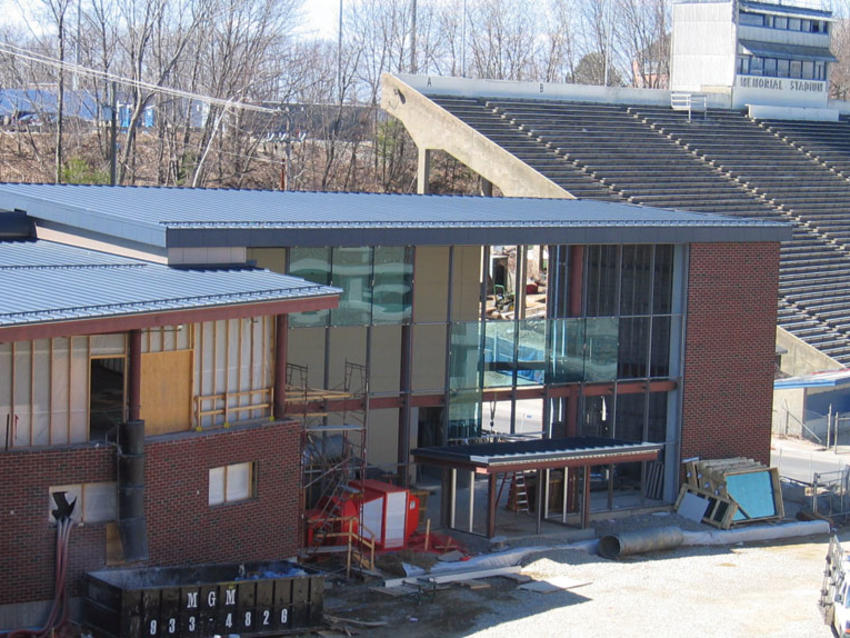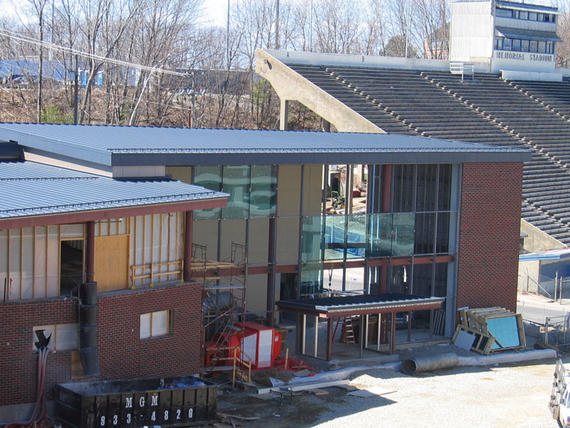A new football complex was slated for construction on the UConn Storrs campus. Ground improvement was chosen to meet the off-season construction schedule.

The project
The Burton Family Football Complex, consisting of a building for offices, training facilities, academic resources, and an indoor playing field, was slated for construction on a filled wetland on the University of Connecticut Storrs Campus.
The challenge
Portions of the site were underlain by thick deposits of organic soil, while other portions were underlain by a thinner layer of organics and a thick layer of loose granular fill. Neither the fill nor the peat would adequately support the planned building and indoor playing field. In the eastern area of the site, where the peat layer thickness was excessive, both the overlying fill layer and the peat layer were excavated by the General Contractor. To avoid the cost of a de-watering program and temporary bracing, the Site Contractor performed the excavation and fill placement underwater. Underwater placement resulted in very loose soil conditions.
The solution
A vibro pier program was designed to support shallow foundations. The program was designed to reinforce the organic soils and densify the overlying granular fill. To alleviate differential settlement of the indoor playing field, a vibro pier-supported load transfer platform consisting of a 3-foot thick layer of compacted structural fill reinforced with geogrid was designed.
Beneath the planned building, Keller constructed 30-inch diameter vibro piers at spread footing locations, and on a 10-foot triangular spacing to support the concrete floor slab. The bottom-feed vibrator was lowered to design depth, and then select aggregate was introduced through the feeder tube, densified, and laterally compacted against the surrounding soil in lifts by the vertical ramming of the vibrator. This process was repeated until the pier was completed.
To support the load transfer platform and playing field loads, Keller constructed 30-inch diameter vibro piers on an 8-foot triangular grid and 36-inch diameter piers beneath the grade beams. Where the excessive organic soils were removed, Keller performed vibro compaction to a depth of 15 feet, at 452 points, to compact the loose granular backfill.
The vibro piers densified the loose granular fill and reinforced the peat layer providing excellent load support and settlement control. The vibro compaction effectively densified the loose granular backfill to design specifications.
Modulus Testing performed on a sacrificial vibro pier demonstrated that the design performance was achieved. In the over excavated area, SPT tests were performed between vibro compaction points, verifying that the required compaction was achieved in the loosely placed granular fill.
